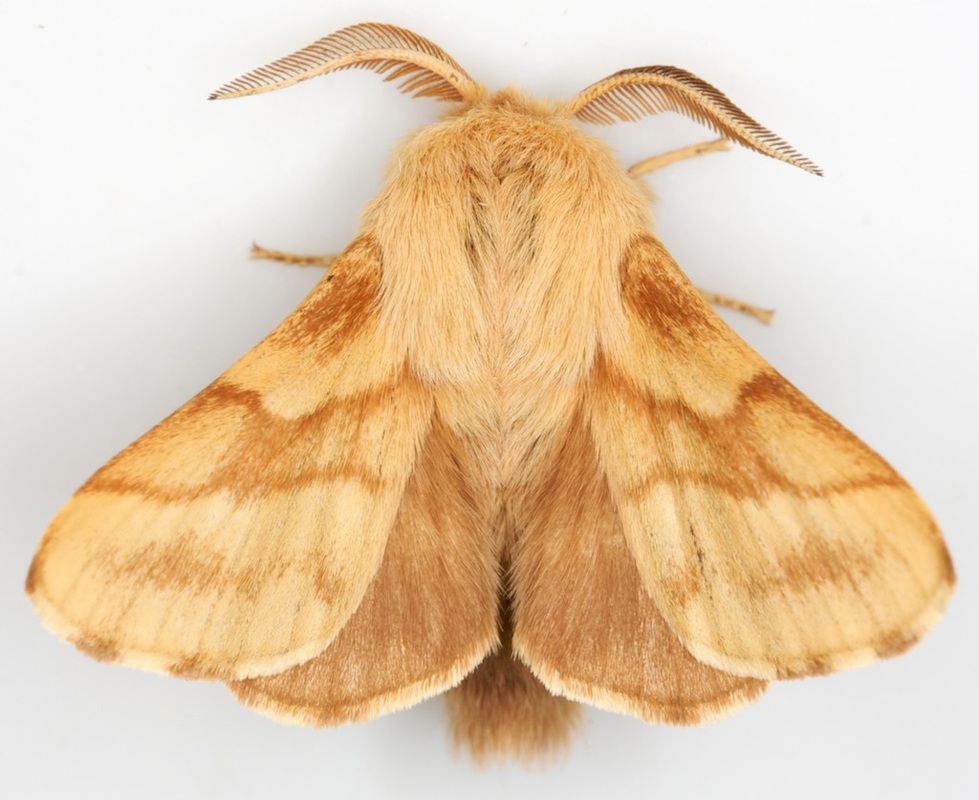Family name derived from the Greek for woolly caterpillar (lasio = woolly, campa = caterpillar).
'Eggar' derived from the egg-shaped cocoons of some species. 'Lappet' derived from decorative skin flaps on the larval prolegs.
Medium to large moths with broad wings and large hairy bodies.
Most British species are brown or yellowish with one or two cross-lines and often a white forewing spot.
Males have feathered antennae, females have relatively simple antennae.
All British species have a reduced proboscis and do not feed as the adult.
Hindwing lacks a frenulum; eyes hairy (sometimes sparsely); labial palp with basal segment thinly haired.
'Eggar' derived from the egg-shaped cocoons of some species. 'Lappet' derived from decorative skin flaps on the larval prolegs.
Medium to large moths with broad wings and large hairy bodies.
Most British species are brown or yellowish with one or two cross-lines and often a white forewing spot.
Males have feathered antennae, females have relatively simple antennae.
All British species have a reduced proboscis and do not feed as the adult.
Hindwing lacks a frenulum; eyes hairy (sometimes sparsely); labial palp with basal segment thinly haired.
Subfamily: Poecilocampinae (2G 2S)
Tribe: Poecilocampini
Tribe: Poecilocampini
Subfamily: Malacosomatinae (1G 2S)
Subfamily: Lasiocampinae (3T 3G 4S)
|
Tribe: Eriogastrini
Eriogaster 005 Eriogaster lanestris (Small Eggar) fw: 15-21mm; Mar-Apr*; blackthorn (Prunus spinosa), hawthorn (Crataegus spp); NS-B local in England & Wales, most frequent in Somerset and Dorset. *Waring and Townsend give Jan-Mar - but both Norfolk Moths and Suffolk Moths show no occurrence in Jan or Feb and a peak occurrence in the 2nd half of March and 1st half of April. |
|
Subfamily: Pinarinae (3T 3G+1EX 3S+1EX)
Tribe: Gastropachini











